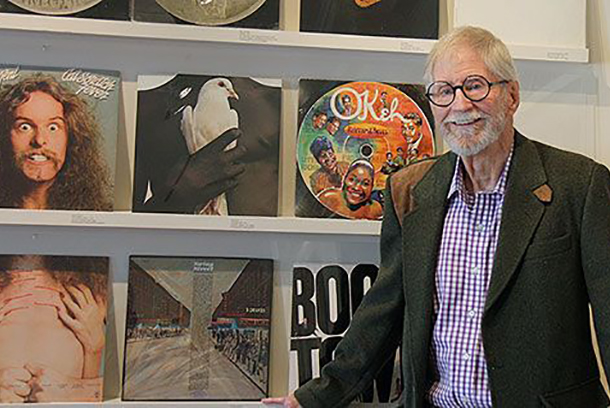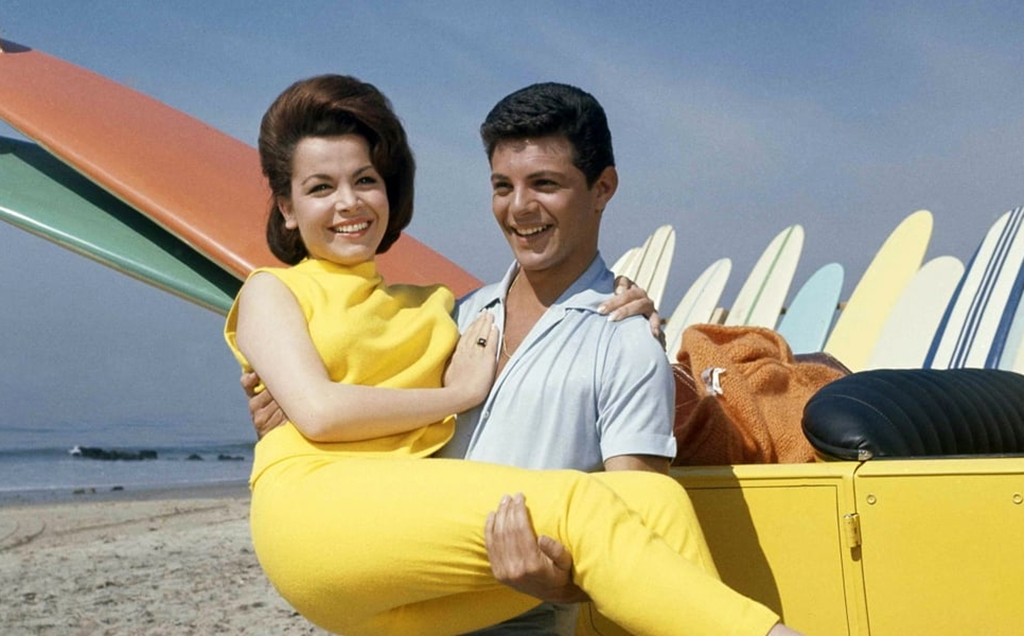We often talk about the lost art of the album cover. The following is the New York Times obituary of the great art director and album visionary John Berg who passed away on October 11th. It’s important to remember the great artists who’s works we coveted and admired as we sat and studied those album covers time after time.
The following is courtesy of The New York Times
John Berg, a Grammy-winning art director for Columbia Records who was midwife to some of the most emblematic album covers of the late 20th century — featuring images of Bob Dylan’s backlit corona of hair, the Chicago logo embossed in chocolate and Bruce Springsteen sharing a private joke with the saxophonist Clarence Clemons — died on Sunday in Southampton, N.Y. He was 83.
The cause was pneumonia, his wife, Durell Godfrey, said.
Mr. Berg, who had never worked on a record album when he joined Columbia in 1961, was responsible in his quarter-century there for more than 5,000 of them, by musicians as diverse as Blood, Sweat & Tears; the Byrds; Lead Belly; Thelonious Monk; Simon and Garfunkel; Bessie Smith; Barbra Streisand; and George Szell.
He commissioned covers from some of the foremost artists of the period, including the designer Milton Glaser; the illustrators Paul Davis, Edward Sorel and Tomi Ungerer; and the photographers Richard Avedon, Jerry Schatzberg and W. Eugene Smith.
Hallmarks of Mr. Berg’s work included stylistic ecumenicalism, cheeky wit, innovative typography and the frequent use of gatefold covers, in which the album opened like a book and yielded twice as big a canvas for artwork.
One of the best-known covers produced under his direction was “Bob Dylan’s Greatest Hits” (1967), which features the backlit photograph, by Rowland Scherman, of Mr. Dylan in performance. In what was often described as the first marketing effort of its kind, the album was packaged with an accompanying poster, commissioned by Mr. Berg and memorably executed by Mr. Glaser, that depicted Mr. Dylan in profile, his hair a mass of brightly colored psychedelic whorls.
The design of the album won Mr. Berg one of his four Grammy Awards.
Mr. Berg had employed unorthodox packaging for another Dylan album, the two-LP “Blonde on Blonde,” released the year before. Its cover, featuring an immense photo of Mr. Dylan’s face by Mr. Schatzberg and no type, opened vertically to reveal a nearly full-length portrait.
“The record would fall out on the floor when you opened it up,” Mr. Berg told The East Hampton Star in 2012. “That was a big selling point.” He added: “Everybody wanted one, because they’d never seen that before.”
John Hendrickson Berg was born in Brooklyn on Jan. 12, 1932, and reared there in Flatbush. After graduating from Erasmus Hall High School, where he was a cartoonist for the student newspaper, he earned an undergraduate degree from Cooper Union in Manhattan.
Mr. Berg commissioned covers for albums including, clockwise from top left: Bruce Springsteen’s “Born to Run,” “The Barbra Streisand Album,” “Bob Dylan’s Greatest Hits,” “Chicago X,” “Fresh” by Sly and the Family Stone, and Thelonious Monk’s “Underground.”
Mr. Berg worked for advertising agencies including Doyle Dane Bernbach, and for magazines including Esquire, before joining Columbia as an art director. He was later named creative director, and retired in 1985 as a vice president.
At Columbia, Mr. Berg’s job drew not only on his flair for packaging but also on his esteemed eye for selection. Assigned to create a cover for “Born to Run,” he found himself contemplating with distaste the sober posed photograph that Mr. Springsteen had chosen.
“Bruce showed me the picture he wanted, which I always describe as ‘John Updike,’ ” Mr. Berg recalled in The East Hampton Star interview. “He looked like an author, one of those back-cover-of-his-book pictures. I asked him to leave the stuff with me and I would go through the contacts.”
Sifting the images, by Eric Meola, Mr. Berg came upon one of Mr. Springsteen in a moment of candid intimacy, his face dissolving in mirth as he leaned on Mr. Clemons’s shoulder.
With that image, the album’s cover became one of the most totemic of all time. The design proved so widely recognizable that it was imitated, among other places, on the Sesame Street album “Born to Add,” with Muppets replacing men.
Mr. Berg’s calling often entailed the discreet art of diplomacy. For “The Barbra Streisand Album,” released in 1963, he needed to persuade Ms. Streisand to approve a photo of her face in shadow. He prevailed, and won a Grammy.
It equally entailed knowing when to use little or no photography at all — something he did in a series of albums by Chicago. Their design centered on the group’s cursive logo, which appeared variously carved in wood, worked in leather, hidden in the loops of a fingerprint, printed on a sepia-toned map and, in “Chicago X” (1976), a Grammy-winning effort for Mr. Berg, molded in chocolate. He had also created the initial design of the logo itself, intended to evoke the script of Coca-Cola.
A resident of East Hampton, on Long Island, Mr. Berg was divorced from his first wife, who is now known as Rosamond Bassett. Besides Ms. Godfrey, whom he married in 1982, his survivors include a daughter from his first marriage, Kristina Berg. Lars, a son from his first marriage, died before him.
Other album covers created under his direction include Simon and Garfunkel’s “Bridge Over Troubled Water”; Santana’s “Greatest Hits,” featuring a Joel Baldwin photograph of a bare-chested black man holding a white dove; and “Underground,” by Thelonious Monk, for which Mr. Berg won a Grammy.
Mr. Berg’s work was the subject of a 2012-13 retrospective at Guild Hall in East Hampton and can be seen in the book “360 Sound: The Columbia Records Story” (2012), by the historian Sean Wilentz.
On one occasion, Mr. Berg used his impeccable eye to prepare a dish best served cold. One of Columbia’s artists was Mr. Szell, who in an early collaboration, Mr. Berg recalled, had treated him with the imperiousness for which globe-trotting symphony conductors were often famed.
After Mr. Szell’s death in 1970, Columbia rereleased his Beethoven’s Fifth Symphony with the Cleveland Orchestra.
“What you do when you are working on dead people is go through the files” in search of a suitable photograph, Mr. Berg explained in a 2013 interview on Cooper Union’s website.
What he found, and used on the album’s cover, was a large photo of Mr. Szell, shot full-on. In the image, Mr. Szell’s left hand is raised — fingers spread as if indicating the number 5 — and almost completely obscures his face.















